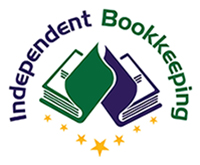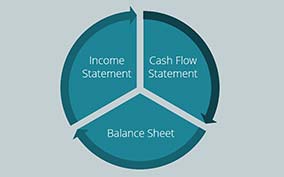At Independent Bookkeeping (like all bookkeepers and accountants), we often provide our clients with multiple reports on a monthly/Quarterly or Annual basis, depending on the requirement. These reports are normally the Balance Sheet, Cash Flow Statement and the Profit and Loss.
Here my aim is to explain how to interpret the Balance Sheet and understand what it is telling you about your business.
The Balance Sheet gives a summary of your company’s Assets, Liabilities, and any Shareholder Equity if applicable.
It is called the balance sheet as the Assets must amount to the same as the Liabilities and Equity.
If you had a loan from a bank, say £5000, this loan would be a Liability, but you would have £5000 cash which is an Asset.
What is an Asset?
Assets tend to be broken down in to current Assets, Assets that can be quickly broken down in to cash, and Long-Term Assets, these take time to be converted in to cash.
Current Assets are:
• Cash
• Money owed to you (Accounts Receivable)
• Inventory – stock which you then sell.
Long-Term Assets:
• Your Fixtures and Fittings
• Buildings/Land
• Intellectual Property – Intangible Asset
• Investments that may be time limited on when they can be cashed in.
What is a Liability?
Liabilities are what your business is liable for (you are due to others). Again, Liabilities can be broken down in to Current and Long Term
Current Liabilities are:
• Bank Overdrafts
• Interest payable
• Overheads such as rent and rates, utilities
• Tax
• Payroll
• Dividends
Long-Term Liabilities are:
• Deferred Tax
• Debts due in more than 1 year
What is Shareholder Equity?
• Earnings that have been kept back for future investment (Retained Earnings)
• Investment by Shareholders through shares in the business
Shareholder equity can be calculated by the following calculation:
Assets – Liability = Shareholder Equity.
So if you have Assets of £100,000 and Liabilities of £75,000 you work out the shareholder Equity as follows:
100,000 – 75,000 = 25,000
So how do I read the Balance Sheet?
A balance sheet is a snapshot of your business at that time, with each and every change to your accounts the balance sheet will change.
e.g a new sale adds an Asset, or a new employee adds a Liability, if shares are issued the Shareholder Equity is adjusted.
Due to the balance sheet being so changeable it is advisable to compare with past balance sheets over time, whether that be monthly, quarterly or yearly so you can see the dynamic changes that are happening over the time periods.
It is also ideal to look at other balance sheets like your industry via Companies House to compare and assess your own business.


